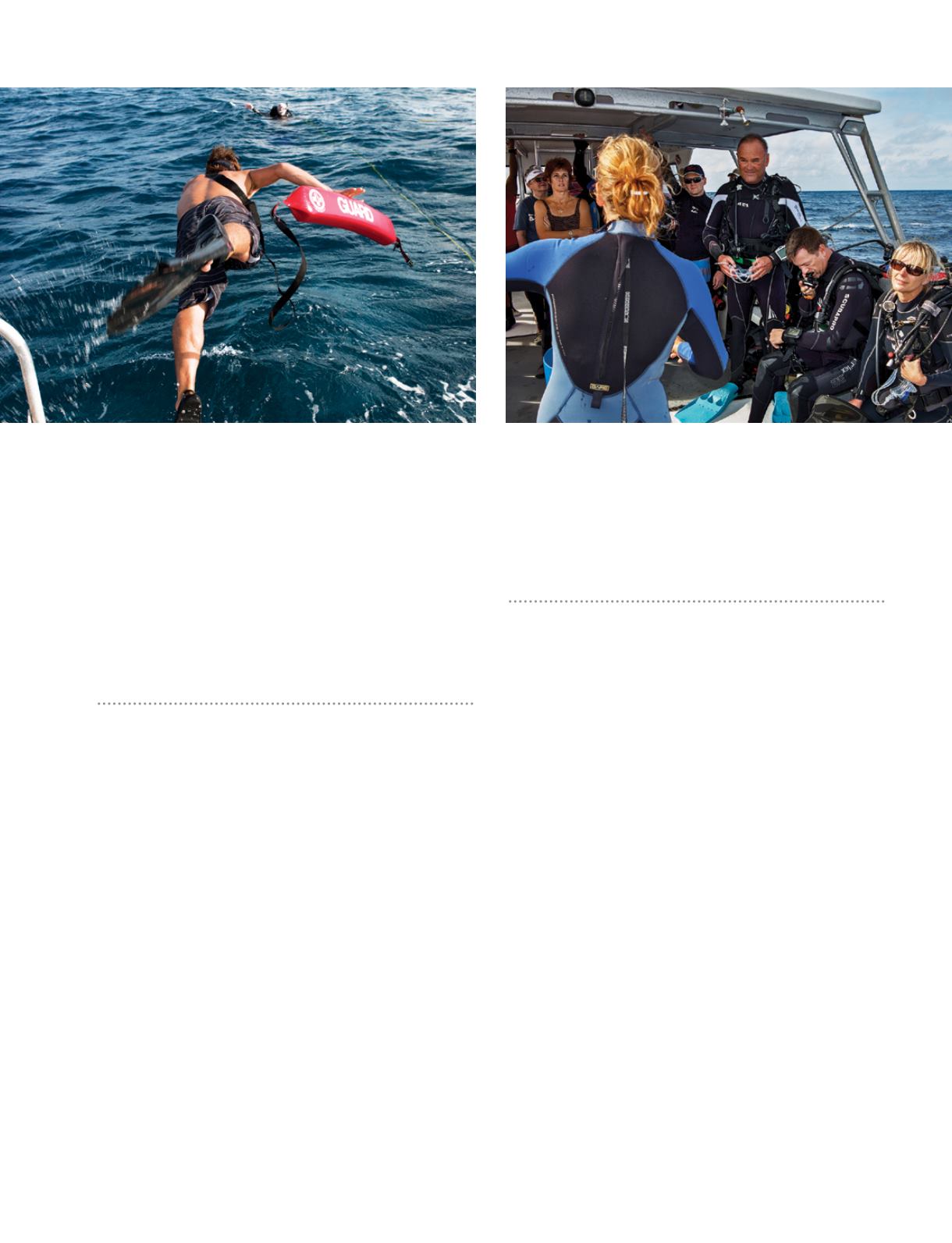
who normally are not aware of the risks of diving, that the
diver knew and accepted those risks before entering the water.
Generally, the protection offered to operators by a signed
release is very high, especially if the release is well written and
detailed. However, enforceability can vary from jurisdiction
to jurisdiction and often from court to court within the same
jurisdiction. But more often than not the release is upheld.
What role does the medical statement play in liability cases?
Concannon:
The medical statement is critical. Its purpose
is to alert the diver to medical conditions that may cause
injuries while diving so the diver can seek proper medical
attention and advice before engaging in diving. People with
medical conditions that may preclude diving often fail to
disclose those conditions on the medical statement and then
sue the dive professionals after they are injured while diving. I
have never seen one of these cases end in favor of the diver.
Hewitt:
The medical statement is hugely significant evidence
in the defense of the dive operator when it reflects that the
diver was fit to dive pursuant to a physician’s statement and/
or that the diver concealed a physical condition that was a
contraindication to diving. Courts and juries rarely think twice
about finding in favor of the dive operator when the injury or
death was due to a physical condition concealed by the diver
or that was not recognized or considered by the physician to
be a contraindication to diving. The medical statement may
also help the dive operator’s counsel find additional evidence
to establish that a medical condition was related to the injury
or death, such as a family history of cardiac problems or
sudden death. It also places the responsibility for the fitness to
dive on the diver and relieves the dive operator from further
responsibility to evaluate the diver’s fitness or health.
What is the duty of the operator and of the certified diver?
Concannon:
The duty of the operator is to safely transport
the diver to the dive site and ensure the vessel and crew have
the necessary safety equipment and procedures on the surface
to support a safe experience for the certified diver. The duty
of the certified diver is to ensure he personally has the proper
gear, training and skills necessary to ensure his own safety
underwater. The bottom line: You are responsible for your own
safety while diving.
Steidley:
Dive operators’ duty to their guests includes but is
not limited to following generally accepted diving practices and
having equipment that functions properly and safely.
Certified divers need to be both physically and mentally fit
to dive and stay within the limits of their training, skill level
and certification. Divers should follow standard safe diving
practices, including use of the buddy system. Finally, all divers
should conduct thorough buddy and equipment checks before
every dive.
Hewitt:
The dive operator has a responsibility to deliver
divers to a location generally commensurate with the skill
level of the group, assess the dive-site conditions, have
procedures to address emergencies, conduct dive briefings
when warranted and organize the diving in a manner
consistent with general diving practices.
The duty of the certified diver is to be fit; be current and
proficient in his diving skills; be familiar with his gear and
|
49
Dive operators promote diver safety through practices such as establishing emergency procedures, providing surface support and
conducting predive briefings.
Opposite: In addition to limiting dive-operator liability, medical statements and assumption-of-risk forms help remind certified divers
they’re responsible for their own safety.


